Everest Base Camp Trek Agency | Cost | Packages | Trips
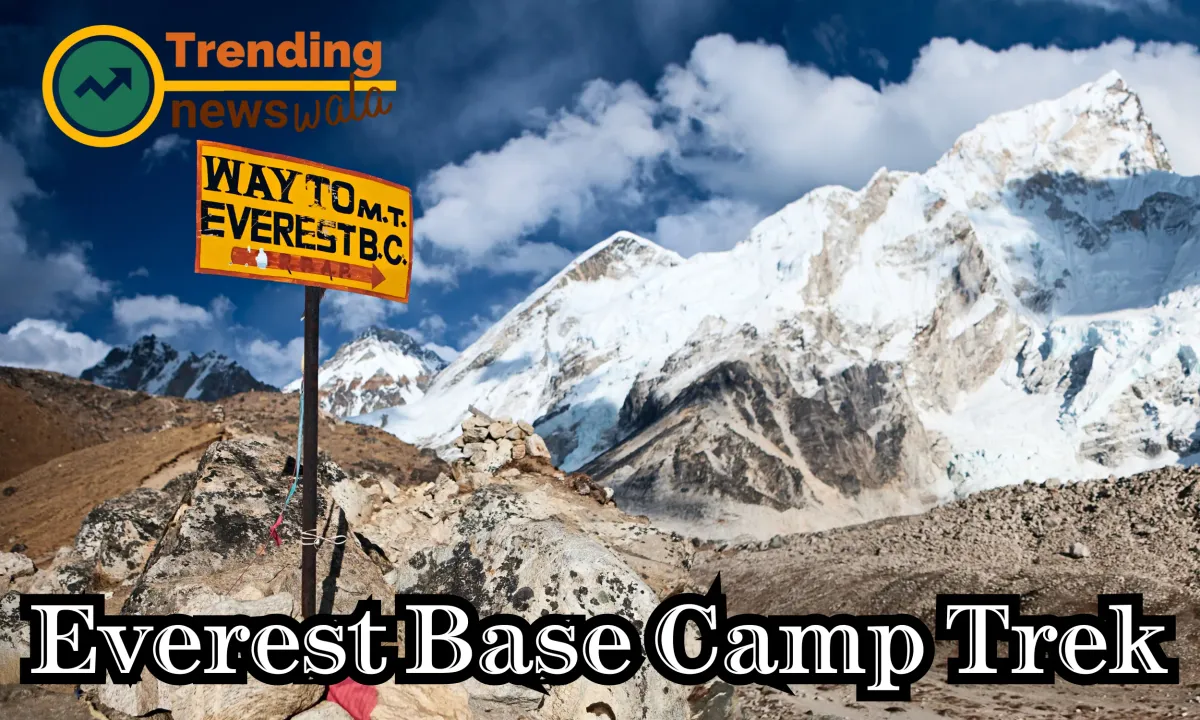
The Everest Base Camp (EBC) Trek is a renowned and challenging trekking route that leads trekkers to the base camp of Mount Everest, the world's highest peak. Situated in the Khumbu region of Nepal, this trek offers breathtaking views of the Himalayan landscape, a glimpse into the unique Sherpa culture, and an opportunity to stand at the foot of Mount Everest.
Key Features of the Everest Base Camp Trek:
- Starting Point:The trek typically begins with a scenic flight from Kathmandu to Lukla, a small mountain airstrip in the Khumbu region. Lukla serves as the gateway to the Everest region.
- Sherpa Villages and Culture:The trail passes through picturesque Sherpa villages, including Namche Bazaar, Tengboche, and Dingboche. Trekkers have the chance to experience Sherpa hospitality, visit monasteries, and witness local traditions.
- Sagarmatha National Park:The trek takes place within the Sagarmatha National Park, a UNESCO World Heritage Site known for its diverse flora and fauna. Trekkers traverse through alpine forests, rhododendron groves, and rugged mountain terrain.
- Acclimatization:Due to the high altitudes, acclimatization is crucial. The trek typically includes rest days to allow trekkers to acclimatize and minimize the risk of altitude-related issues.
- Namche Bazaar:Namche Bazaar, a vibrant trading hub, is a key acclimatization stop. Trekkers can explore the market, interact with locals, and enjoy panoramic views of Everest and neighboring peaks.
- Kala Patthar:Kala Patthar, a notable viewpoint, offers stunning panoramic views of Mount Everest, Lhotse, Nuptse, and other surrounding peaks. Many trekkers ascend Kala Patthar for sunrise to capture breathtaking photos.
- Everest Base Camp:The trek culminates at Everest Base Camp, situated at an elevation of 5,364 meters (17,598 feet). Trekkers can stand at the base of the Khumbu Icefall and witness the grandeur of Mount Everest up close.
- Gokyo Lakes (Optional Extension):Some trekkers choose to extend their journey to include the Gokyo Lakes region. This side trek introduces turquoise lakes, the Gokyo Ri viewpoint, and the opportunity to cross the Cho La Pass.
- Challenges:The trek presents challenges such as high altitudes, varying weather conditions, and physically demanding terrain. Trekkers need to be prepared both physically and mentally for the trek.
- Best Time to Trek:The pre-monsoon (spring: March to May) and post-monsoon (autumn: September to November) seasons are considered the best times for the Everest Base Camp Trek due to stable weather conditions.
Preparation and Considerations:
- Physical Fitness:Good physical fitness is essential for the Everest Base Camp Trek. Cardiovascular exercises and strength training are beneficial.
- Acclimatization:Adequate acclimatization is crucial to prevent altitude sickness. Trekkers should follow a gradual ascent and take rest days.
- Packing:Pack appropriately for varying weather conditions, including warm clothing, a good pair of trekking boots, a backpack, and essential items like water purification tablets and a first aid kit.
- Guides and Permits:While the trek can be done independently, many trekkers opt for guides and porters. Permits, including the Sagarmatha National Park entry permit and the TIMS card, are required.
The Everest Base Camp Trek is a bucket-list adventure for trekkers and nature enthusiasts worldwide. It offers a unique blend of natural beauty, cultural experiences, and the sense of achievement that comes with reaching the base of the world's highest peak.
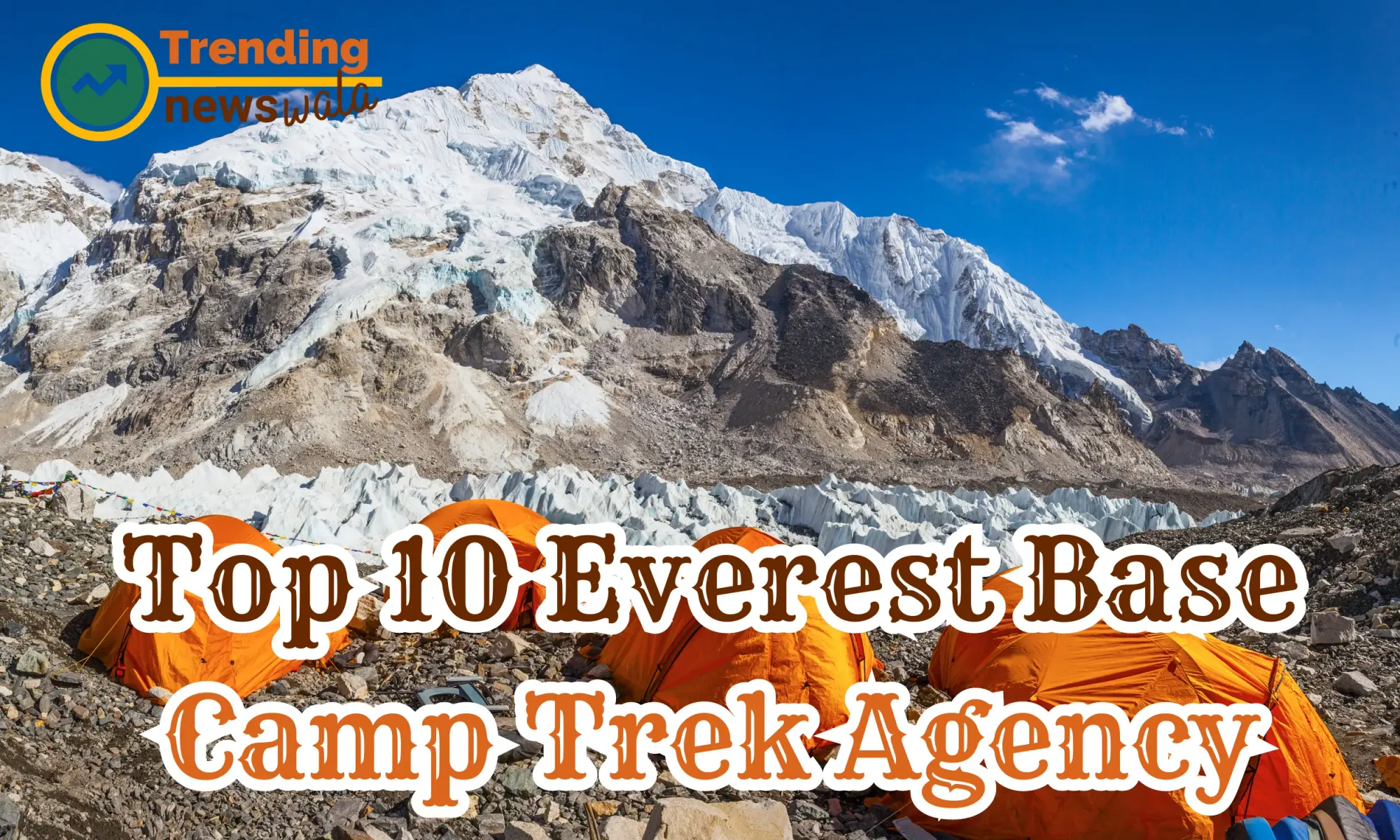
The Everest Base Camp Trek is a once-in-a-lifetime adventure that takes trekkers through the stunning landscapes of the Khumbu region, providing awe-inspiring views of the world's highest peaks.
Here are the Top 10 Everest Base Camp Trek
1. Trek The Himalayas
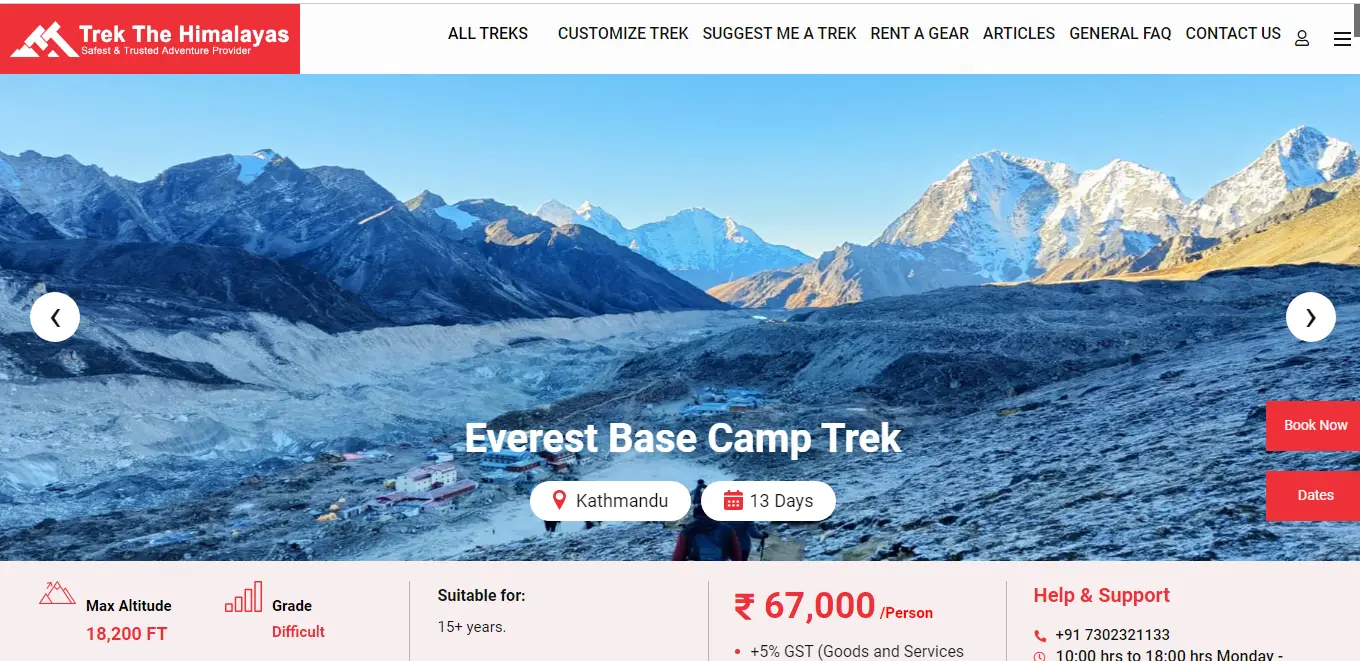
When it comes to trekking in the Himalayas, Mt. Everest is the most celebrated peak and not just in our country but all across the globe. For avid trekkers and mountaineers, getting up close to the highest mountain peak in the world is a once-in-a-lifetime experience. The classic trek takes place in the Bagmati Zone of Nepal and allows you to experience the immense beauty of the surroundings. Along your trek, you will get to witness 4 of the 6 highest mountain peaks in the world — Cho Oyu (8,201 m), Mt. Makalu (8,470 m), Mt. Lhotse (8,516 m), and Mt. Everest (8,848 m).
Everest Base Camp is a teahouse trek, which means you will stay at some of the highest villages in the world and get a close look at their cultures and traditions, and life in the remote corners of the Himalayas. Staying at the Sherpa villages you will get to learn a lot about the mountain lifestyle and how inextricably the people are connected to the mountains. There are many notable junctures throughout the trek and Kala Patthar is one such point. Standing at an altitude of 5,500 m it offers an astonishing view of Mt. Everest. EBC trek presents a wonderful opportunity to experience the grandeur of the Himalayas, the imposing challenge and thrill of the climb, and the charming culture of Nepal.
Trekking in Nepal is all about trekking amidst the biggest mountain ranges and on this trek, you will see mountains surrounding you. All along the way, you can feel the sense of legacy left behind by the greatest mountaineers. Crossing the route beyond Namche Bazaar, you will come across, Tenzing Norgay Stupa, a tribute to the great mountaineer, who was the first to scale Mt. Everest along with fellow mountaineer Edmund Hillary. Also, just near Dughla on Everest highway, there are memorials for distinguished mountaineers who dedicated their lives on the slopes.
2. Adventure Consultants
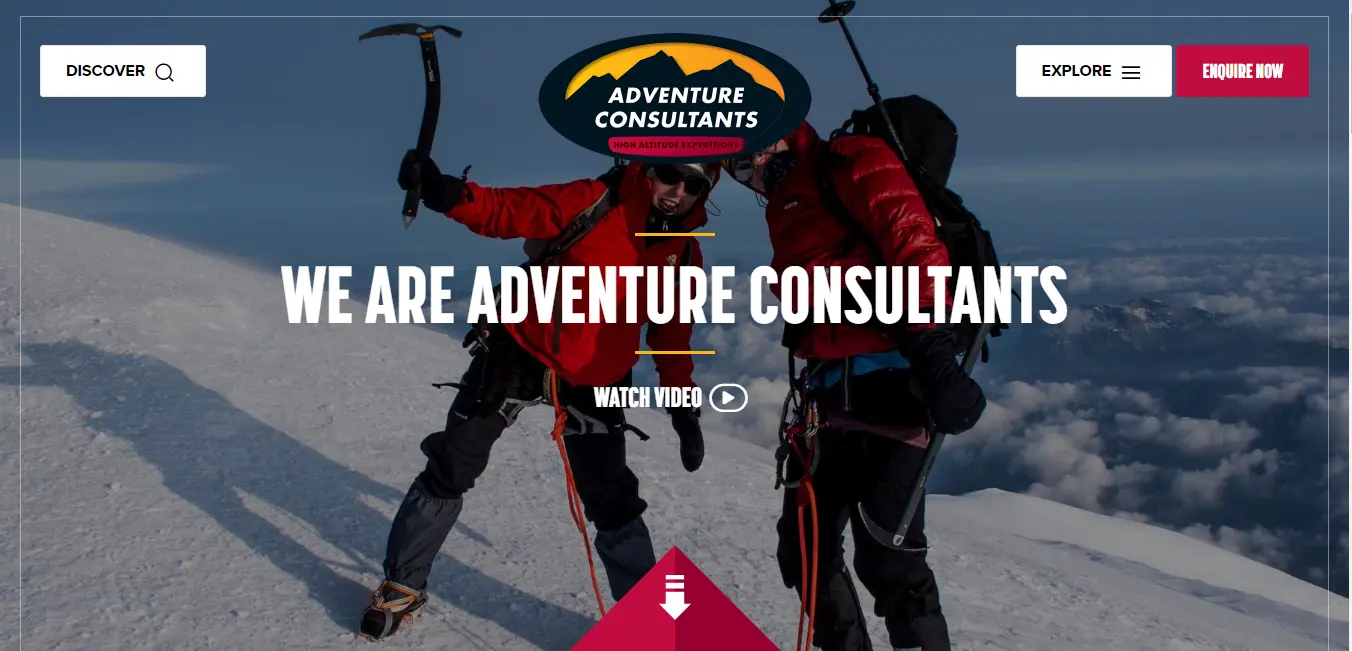
The trek to Everest Base Camp is among the most dramatic and picturesque in the Himalaya. The scenery is varied and spectacular, the lodgings and tracks are of a very high standard, and the interaction with the local Sherpa people is truly memorable.
Our pre-monsoon treks are unique in that we have the privilege of staying overnight at Base Camp. Our days spent exploring Base Camp give us an appreciation of the inner workings of expedition life, while our post-monsoon departure enjoys the clear skies and pristine views of the autumnal trails. Those joining our April 1 departure have the added experience of trekking alongside our Everest climbing expedition members enroute to Base Camp.
3. India Hikes
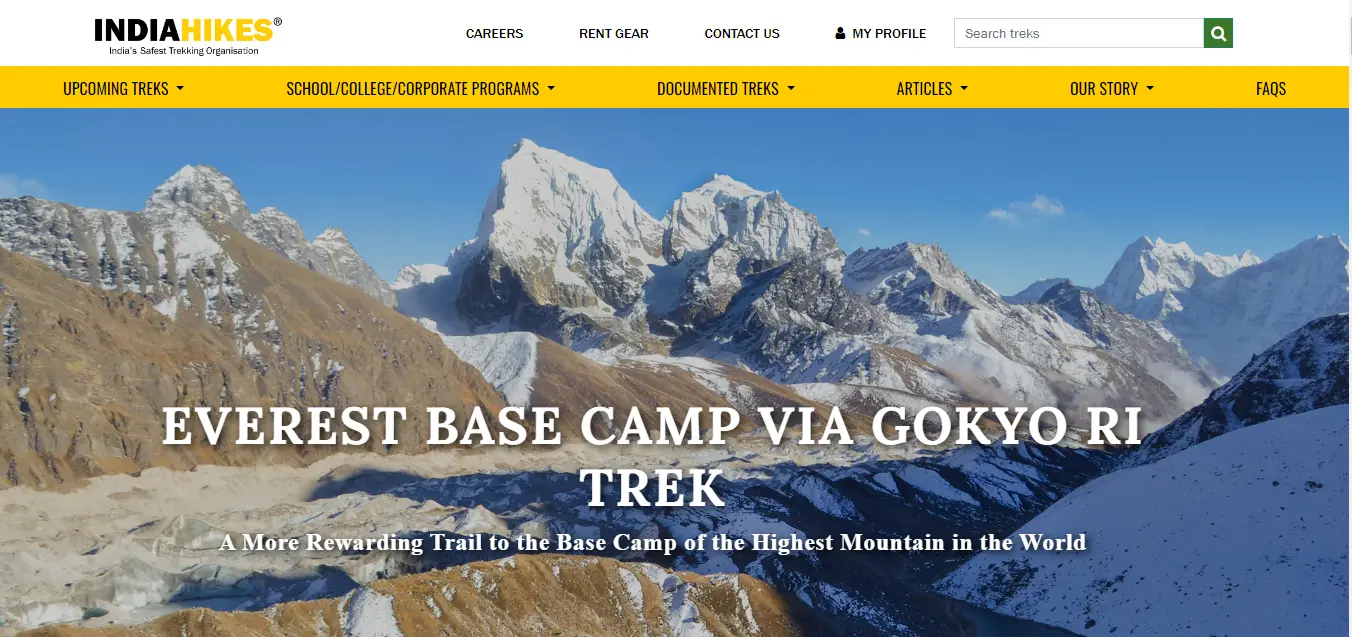
The world knows of the Everest Base Camp trail. To go to the base camp of the highest mountain in the world is on every mountain lover’s bucket list. However, we believe, to truly do justice to trekking in the Everest region, Everest Base camp- Gokyo Ri circuit is the trek to do! This trail offers you the best of both worlds: the well-trodded Everest region and the lesser-visited Gokyo region. By adding three more days to the itinerary, the trail becomes infinitely more rewarding.
First, the views from the Gokyo Ri summit are much grander than the ones you will see from on top of Kala Patthar in the Everest region. From Kala Patthar, you would see three of the 14 eight-thousanders in the world – the Everest, Makalu and Lhotse. On the Gokyo Ri summit, you not only see these mountains but also see another eight-thousander, Cho Oyu. Cho Oyu, the sixth highest mountain in the world, is an additional treat you get on the Gokyo trail.
Then, when you look down from the Gokyo Ri summit, you see the Ngozumpa glacier – the longest glacier in the Himalayas. Behind you, you see three blue-green lakes that seem to dwarf everything around them. These are the Gokyo lakes. There are five of them – each grander than the other that you get to visit. All of this, coupled with the seclusion the Gokyo region offers, makes it a stupendous addition to the Everest Base Camp trail.
4. A Mountain IQ Guide
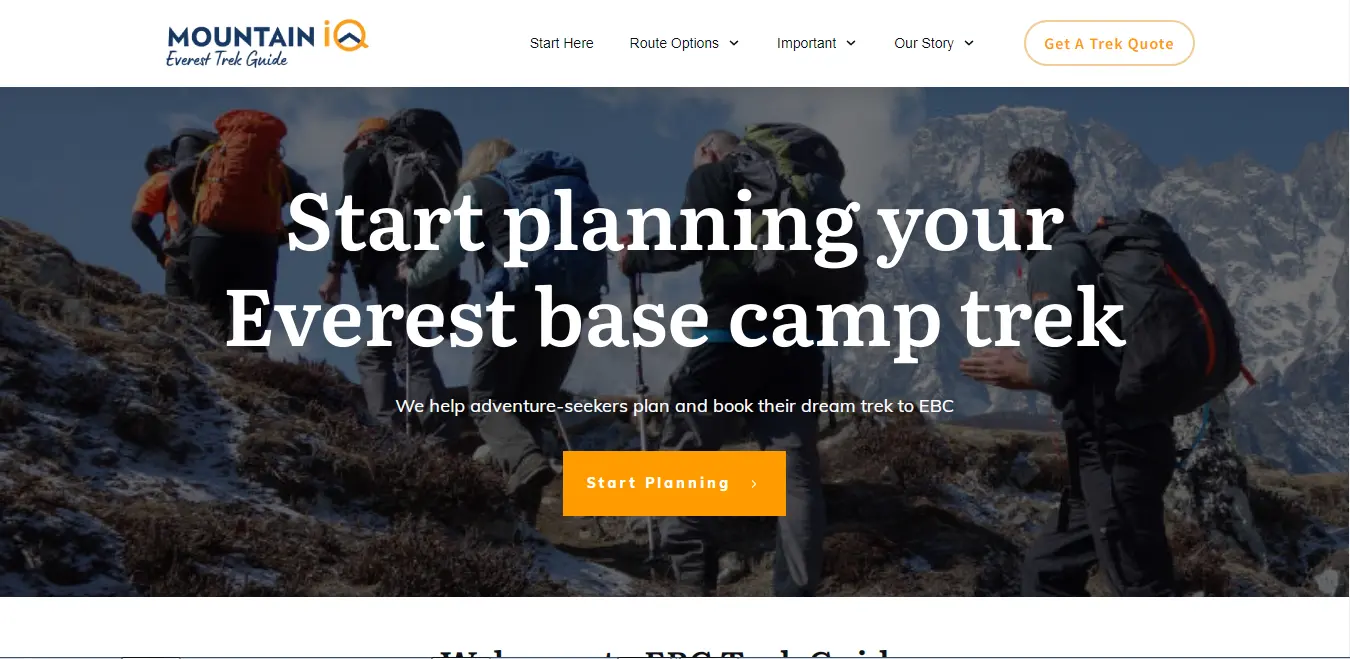
Reaching Everest Base Camp has become the goal of thousands of avid trekkers the world over. There is a sense of grandeur that comes with trekking through an area considered a Mecca for climbing and mountain enthusiasts.
This website is the most comprehensive online guide to the Everest Base Camp Trek. On it you will find all the information you need to trek safely and successfully in the region.
On this page we provide a general overview to the Everest Base Camp Trek, along with many links to further reading on topics like: Altitude Sickness, Packing Lists, Route Variations and many FAQs!
5. Bikat Adventures

Being at the foot of the world’s tallest mountain is an obvious pull but the trek to Everest Base Camp is so much more than just that. Regarded as a classic, magnificent views aside, EBC trek introduces you to the rich and diverse culture of Nepal and brings you to the heart of the lives of some of the warmest people you will ever met. The immense variation in geography presented by Nepal’s landscape is unimaginable and the trek to the base of the highest mountain gives you a taste for just that – leading you to and through bits of all that Nepal has to offer.
EBC is one of the three most popular treks in all of Nepal including Annapurna Circuit Trek and Annapurna Base Camp Trek. Confronted by photogenic views on every corner, beautiful mornings and even better sunsets in the midst of sharp peaks, ridges and mountain walls on all sides, the region is a world of its own
6. Ace the Himalaya
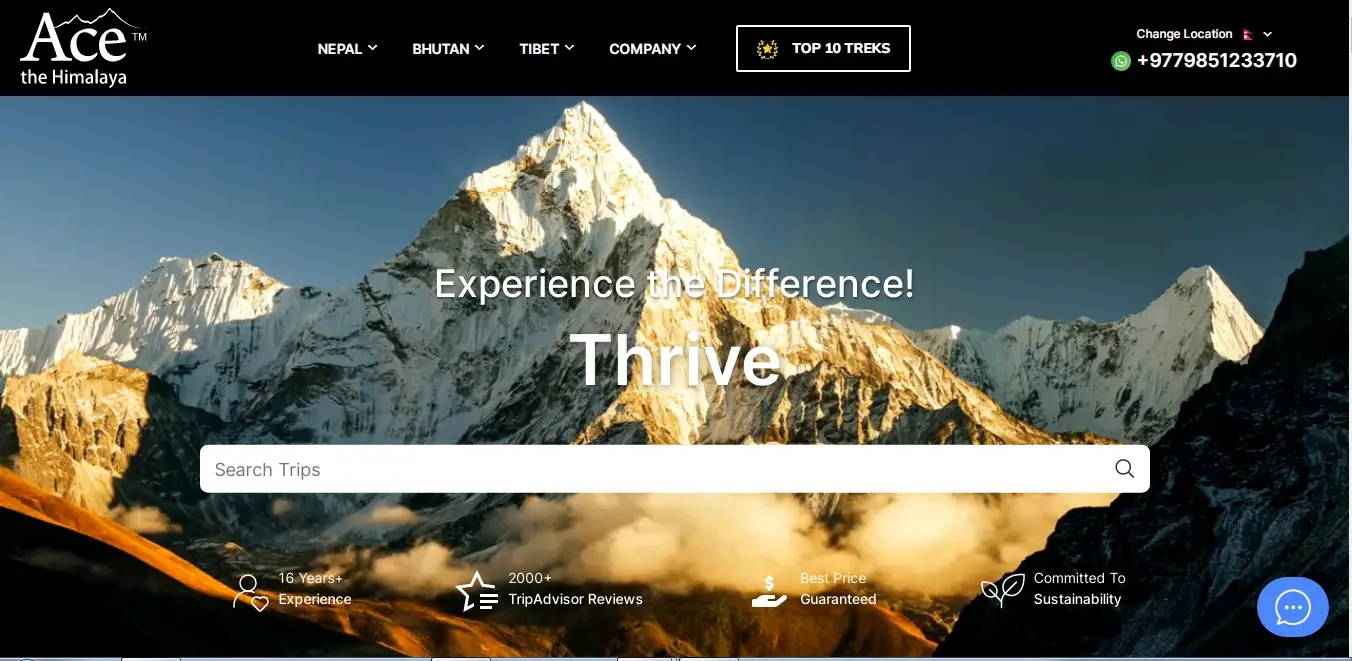
The Everest Base Camp trek combines the convenience of well-maintained paths with the raw beauty of the Himalayas. The Everest region, located in the lap of the mighty Himalayas, is recognized for its beautiful scenery and welcoming Sherpa people. This trek introduces you to the world’s highest peak as well as the culture and traditions of Nepal.
The 14 day Everest Base Camp trek will take you to a height of roughly 5,364 meters. It provides panoramic views of many 8,000-meter-high summits. You can witness the incredible view of Pumori, Lhotse, Nuptse, Lobuche, and other peaks, as well as the iconic Mt Everest itself.
7. Earth Trekkers
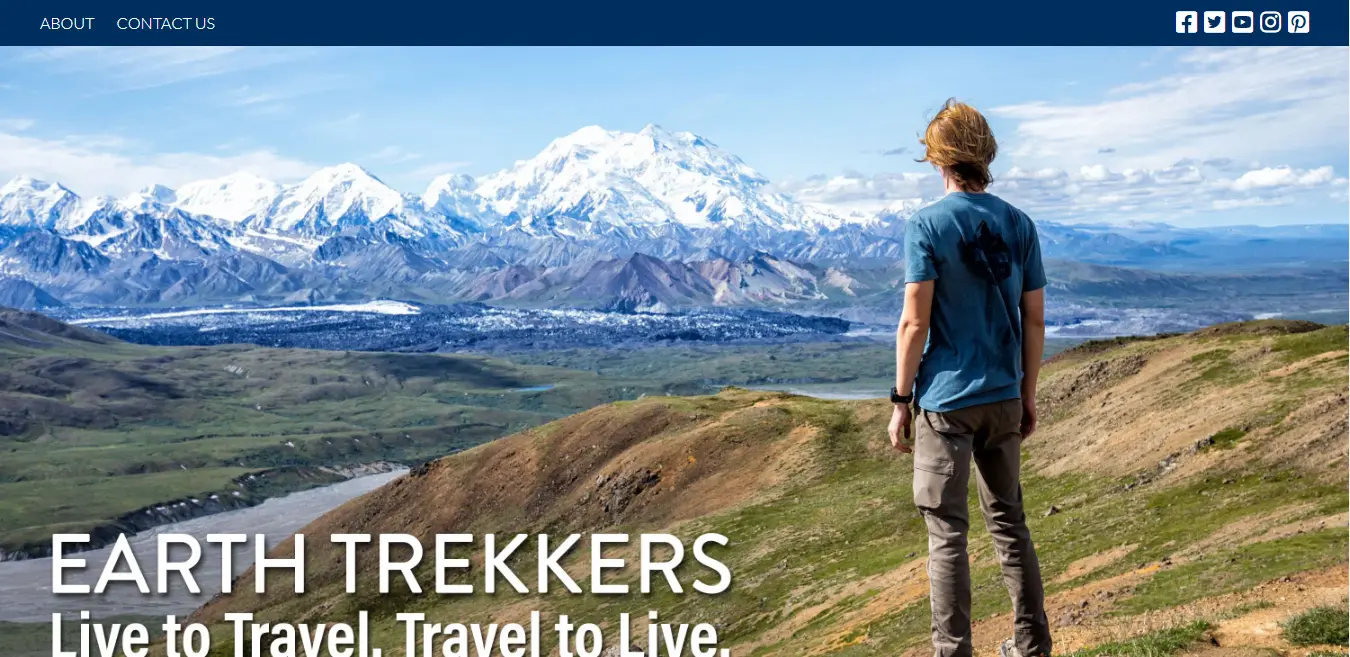
Trekking to Everest Base Camp in Nepal was one of the highlights of our trip around the world. In fact, this trek was so important to us that we planned the entire year around this two week adventure.
Trekking to base camp was more challenging than we anticipated, both physically and mentally, but was absolutely worth it. While traveling through the Himalayas of Nepal, spinning the prayer wheels, visiting Buddhist monasteries, and meeting the very friendly Nepali people, we made memories we will never forget.
There are two main seasons to trek to Everest Base Camp, in the fall between October and November and again in the spring between April and May. The true climbing season to summit Everest takes place in April and May, but the more favorable trekking season is during the fall months. This is when the skies are clear and the scenery magnificent.
8. Trek up India
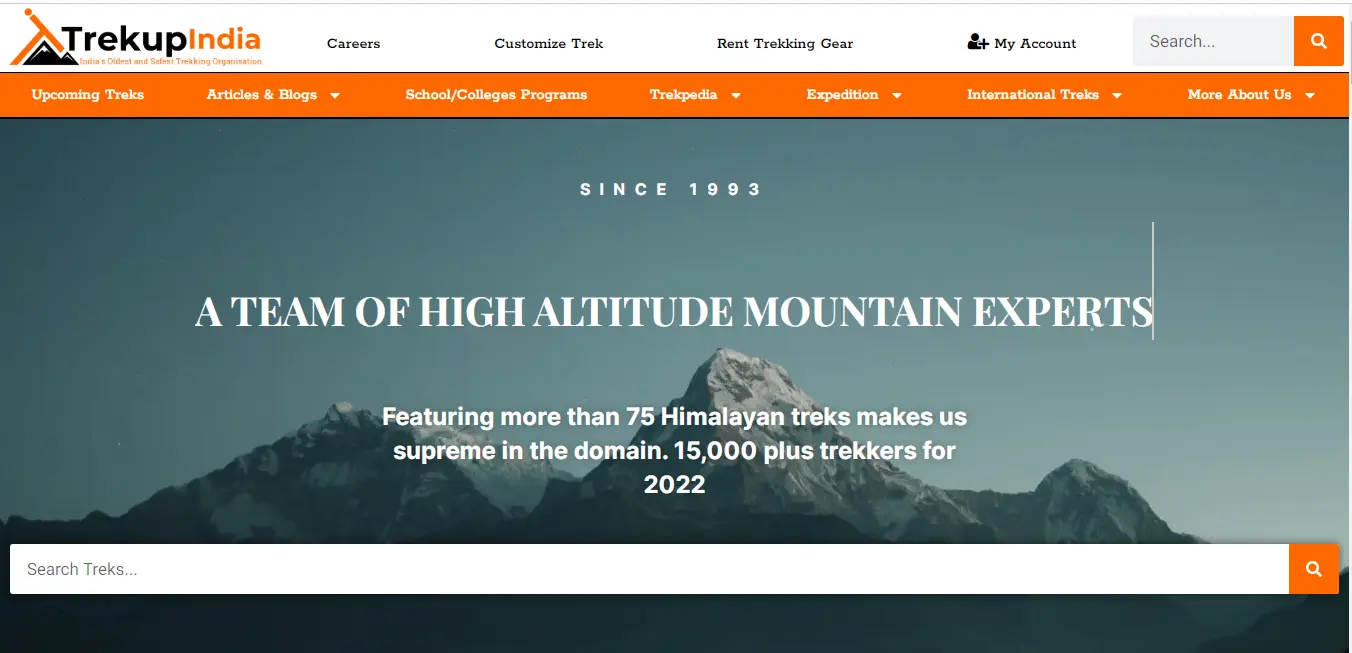
Everyone wonders what it would feel like to climb Everest, a well-known mountain worldwide. It is also called “steps to heaven” which suits its name. The view from there is like nothing seen on any other trek, which also makes it one of the most challenging treks.
On this trek, you could visit many villages at the very top and understand how they live their lives there. The tour starts from Lukla and reaches Mt. Everest, the trek is 50 km long and at an altitude of 18,200 ft. On this trek, you can enjoy the beautiful sunrise and sunset from Kala Patthar. You will trek among the biggest mountains of the Himalayas and see the legacy left behind by the greatest mountaineers.
The temperature is extremely low so you should prepare for the trek accordingly. The temperature in the hills ranges from the highest 20oC and lowest up to -20oC to -300C.
9. Bookatrekking
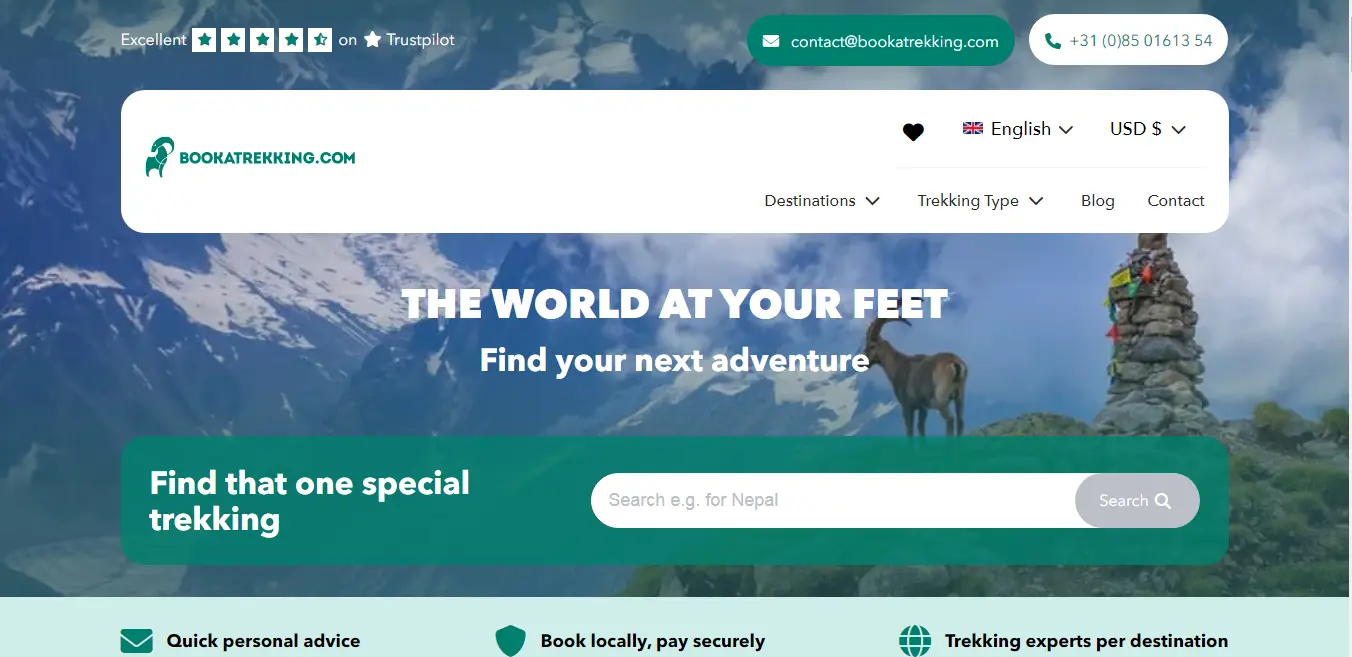
The trek to Everest Base Camp is on the bucket list of many trekkers around the world. And rightfully so! This iconic route through the Khumbu Valley arguably shows the biggest display of high altitude mountains on the planet.
With a spectacular flight to the trailhead, visiting remote sherpa villages surrounded by snow-capped summits and standing at the foot of the highest mountain in the world, the Everest Base Camp trek has all the ingredients of an epic adventure. At Bookatrekking.com we will help you to make the most of it!
I am Jan, and at Bookatrekking.com, I ensure that you find your next adventure in the Himalayas. As an experienced trekker who has visited Nepal multiple times, I’d like to share my knowledge and advice for the trek to the highest camp spot on the planet, Everest Base Camp. Are you ready for some serious altitude?
10. G Adventure

Everest is more than a mountain and the journey to its base camp is more than just a trek. Along a route dubbed by some as "the steps to heaven," every bend in the trail provides another photo opportunity — beautiful forests, Sherpa villages, glacial moraines, and foothills. For active adventurers not afraid to break a sweat, our full trekking support staff will bring you close to local cultures before opening a window to the top of the world.
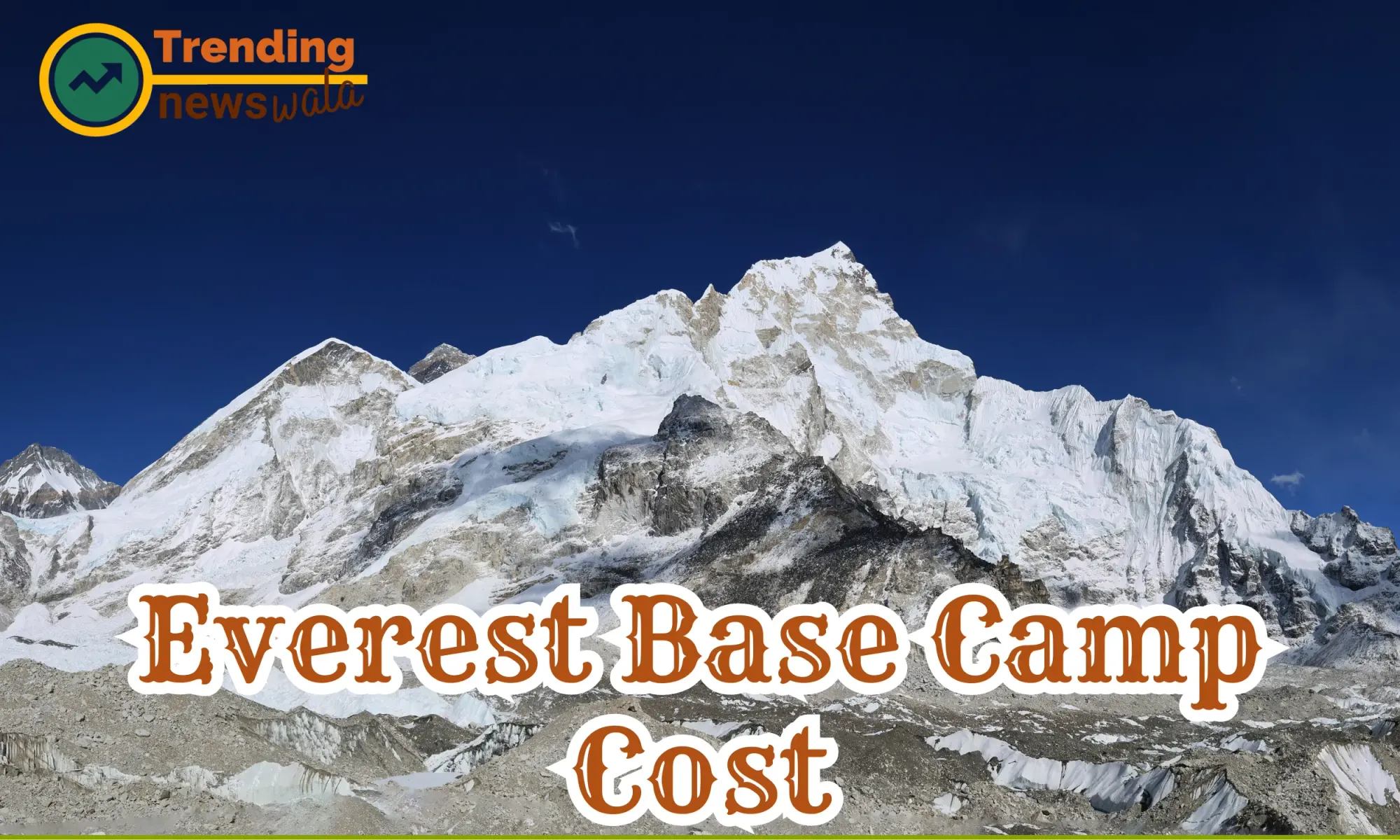
The cost of the Everest Base Camp (EBC) Trek can vary based on several factors, including the duration of the trek, the route taken, the services included, and the time of year. Here's a general breakdown of potential expenses associated with the Everest Base Camp Trek:
International Flights: The cost of round-trip international flights to Kathmandu, Nepal, can vary based on your location, the airline, and the time of booking.
Domestic Flights: The flight from Kathmandu to Lukla is a common starting point for the trek. Prices for domestic flights can vary, and it's advisable to book in advance.
Trekking Permits and Fees:
- Sagarmatha National Park Permit: Required for entry into the Sagarmatha National Park, where the Everest region is located.
- TIMS (Trekkers' Information Management System) Card: Typically required for trekking in Nepal.
Accommodation: Accommodation along the trail is usually in tea houses or lodges. Costs can vary based on the level of comfort and the altitude. Higher altitudes may have higher accommodation costs.
Meals: Meals are often included in the cost of accommodation at tea houses. Budget for extra meals and snacks, especially at higher altitudes.
Guides and Porters: Hiring a guide and/or a porter is optional but can enhance the trekking experience. Guides provide assistance, and porters can carry a portion of your load. Their fees depend on the level of service.
Trekking Gear: If you don't already own trekking gear, you may need to purchase or rent items like a good pair of trekking boots, warm clothing, a backpack, and other essentials.
Travel Insurance: It's crucial to have travel insurance that covers trekking activities at high altitudes. The cost of insurance will depend on coverage and duration.
Miscellaneous Expenses: Budget for miscellaneous expenses, including snacks, beverages, charging electronic devices, and optional side trips.
Tips and Gratuities: Consider budgeting for tips for guides, porters, and other support staff.
Optional Side Trips: Costs for optional side trips, such as the Gokyo Lakes trek or helicopter tours, should be considered if you plan to include them.
Total Estimated Cost: The total estimated cost for the Everest Base Camp Trek can range from $1,500 to $5,000 or more per person. Luxury treks with added services and more comfortable accommodations tend to be on the higher end of the spectrum.
Tips for Budgeting:
- Book flights and accommodations in advance for potential cost savings.
- Consider traveling during the off-peak seasons for lower prices.
- Travel with a reputable trekking agency for a well-organized experience.
- Share the cost of a guide and porter with other trekkers if possible.
It's important to research and compare prices from different trekking agencies, taking into account the services included in the package. Additionally, having some extra cash for emergencies and unexpected expenses is advisable.

Frequently Asked Questions (FAQs) about Everest Base Camp Trek
What is the Everest Base Camp (EBC) Trek?
The Everest Base Camp Trek is a renowned trekking route in the Khumbu region of Nepal that takes trekkers to the base camp of Mount Everest. It is a popular adventure that offers stunning mountain views, unique Sherpa culture, and a chance to stand at the foot of the world's highest peak.
How long does the Everest Base Camp Trek take?
The standard duration for the Everest Base Camp Trek is around 12 days, excluding arrival and departure days. However, the actual duration can vary based on the chosen route, acclimatization days, and individual trekking pace.
What is the best time to do the Everest Base Camp Trek?
The best times to undertake the Everest Base Camp Trek are pre-monsoon (spring: March to May) and post-monsoon (autumn: September to November) seasons. These periods offer stable weather conditions, clear skies, and comfortable temperatures.
Do I need to be physically fit to do the trek?
While a good level of physical fitness is advisable, trekkers of varying fitness levels can undertake the Everest Base Camp Trek. Regular cardiovascular exercise and strength training can help prepare for the trek's challenges.
Do I need prior trekking experience?
Prior trekking experience is not mandatory, and many first-time trekkers successfully complete the Everest Base Camp Trek. However, familiarity with hiking and a willingness to acclimatize gradually are essential.
Are permits required for the trek?
Yes, trekkers need two main permits: the Sagarmatha National Park Permit and the TIMS (Trekkers' Information Management System) Card. These permits can be obtained in Kathmandu or Lukla before starting the trek.
What is the altitude of Everest Base Camp?
Everest Base Camp is situated at an altitude of approximately 5,364 meters (17,598 feet) above sea level.
What are the risks associated with high altitude?
High-altitude sickness is a potential risk. Trekkers are advised to acclimatize properly, stay hydrated, and be aware of symptoms such as headaches, nausea, and dizziness. In severe cases, descending to lower altitudes is necessary.
Can I trek independently, or should I hire a guide?
Both options are possible. Many trekkers choose to trek independently, while others prefer hiring a guide for navigation, local insights, and safety. The choice depends on individual preferences and experience.
What is the cost of the Everest Base Camp Trek?
The cost can vary widely based on factors such as trekking route, duration, level of services, and time of year. A budget trek might cost around $1,500, while luxury treks with added services can exceed $5,000 per person.
What is the weather like during the trek?
Weather conditions vary with altitude, but in general, temperatures range from mild to cold. Lower altitudes may experience milder temperatures, while higher altitudes can be cold, especially at night. Weather conditions can change rapidly, so trekkers should be prepared for varying conditions.
Is it possible to get Wi-Fi and phone signal during the trek?
While some tea houses and lodges offer Wi-Fi for a fee, connectivity is limited in remote areas. Phone signals may be available at lower altitudes, but they become less reliable at higher elevations.
What should I pack for the Everest Base Camp Trek?
Essential items include good-quality trekking boots, warm clothing, a backpack, a sleeping bag, and personal items. A comprehensive packing list should consider varying weather conditions and the duration of the trek.
Are there alternative routes or side trips during the trek?
Yes, there are alternative routes and side trips, such as the Gokyo Lakes trek, Cho La Pass, and Renjo La Pass. These add-ons provide trekkers with additional challenges and stunning views.
Can I do the trek solo, or is it better to join a group?
Both solo and group treks are possible. Solo trekkers should take necessary precautions, while group treks provide a shared experience and added safety.
Embarking on the Everest Base Camp Trek is an adventure of a lifetime, and being well-informed about the trek's details can enhance the overall experience. Trekkers are encouraged to plan ahead, stay informed, and be prepared for the challenges and rewards that come with this iconic trek.





